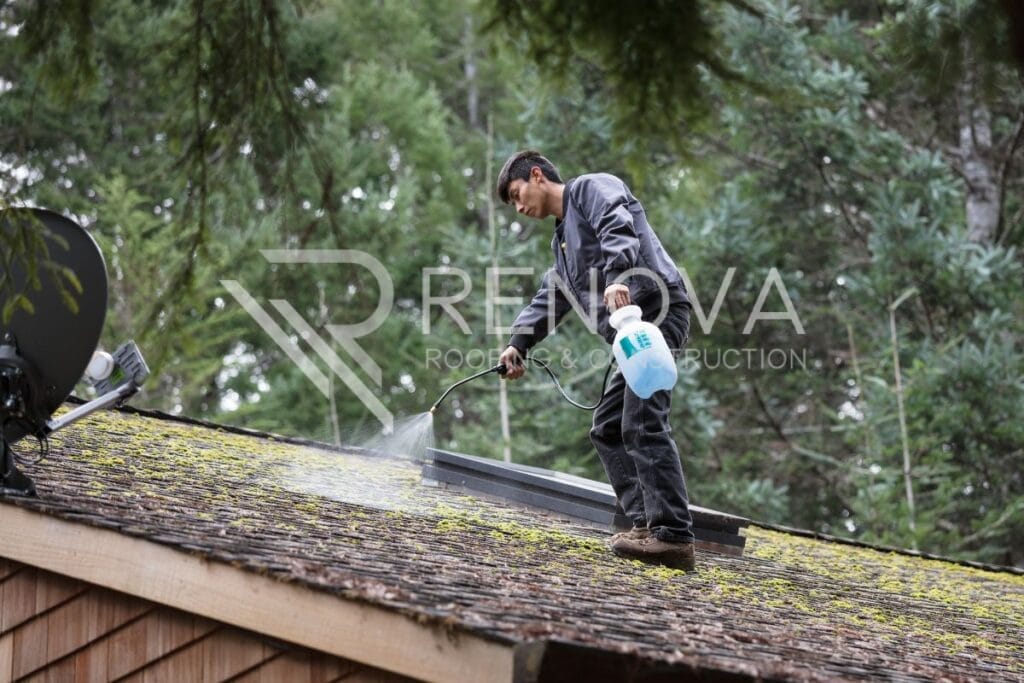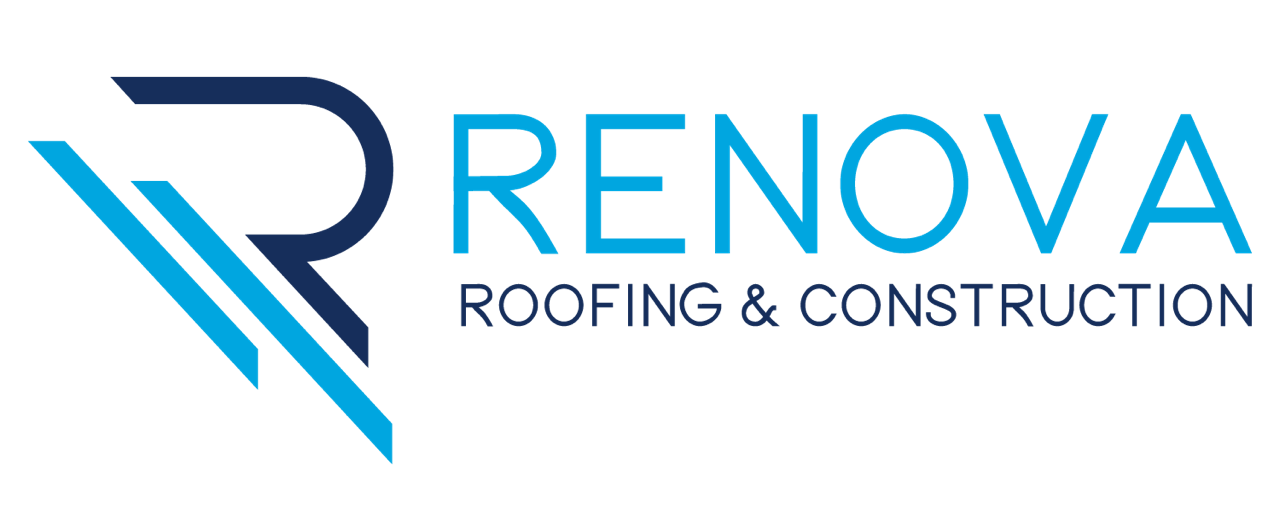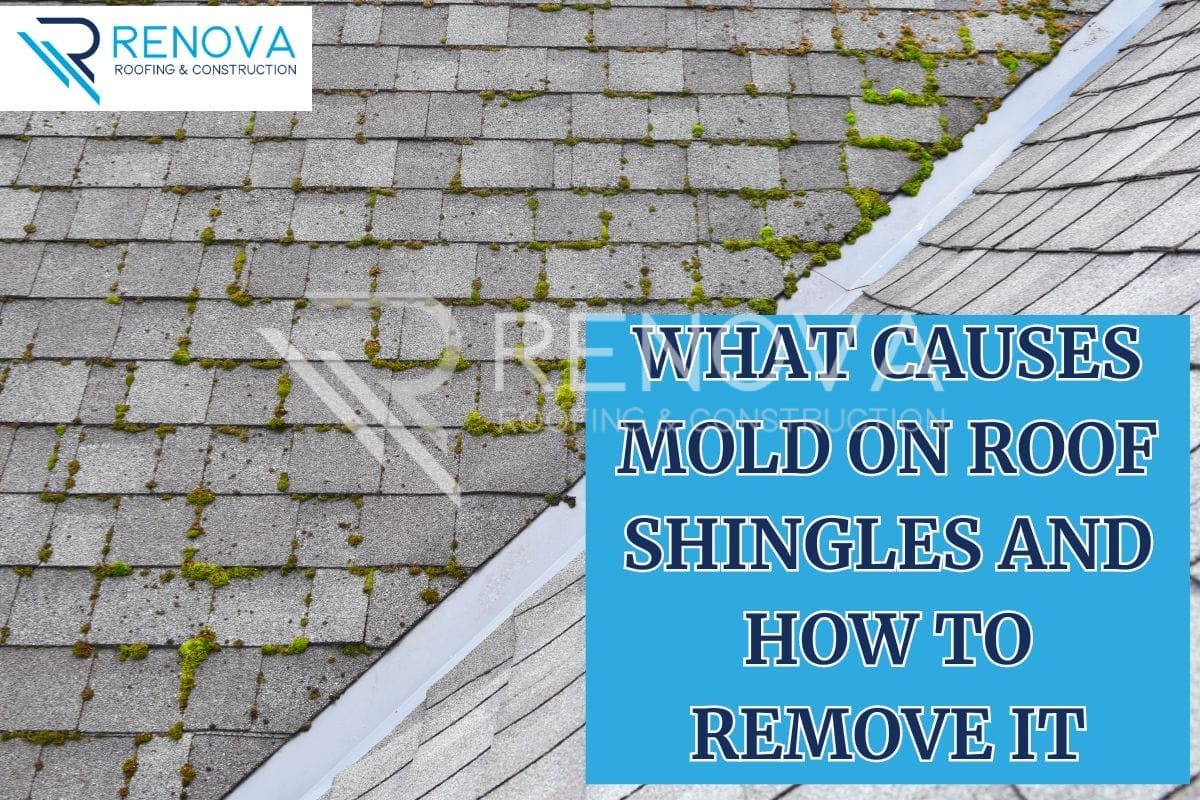Imagine it’s a bright sunny day, and you come out of the home to look at the beautiful sky. But suddenly you see that your asphalt shingle roof doesn’t look right. If you see shingles that are dull or have black and green streaks, chances are there is mold on your roof.
Mold on roof shingles is a common roofing problem that you may face as a homeowner. Mold not only impacts the appearance of your roof but can also cause serious damage if left unchecked.
Though it is generally recommended to hire a contractor to remove mold on shingle roofs, if you opt for a DIY approach, it is a good idea to read this blog post first.
Today, we will guide you on how to safely and effectively remove mold from your roofing system.
What Does Mold Growth Look Like?
Before we tell you how you can clean your roof and get rid of mold, you need to make sure that it is mold growth and not other things such as dirt or discoloration from debris. Why? Because mold is tougher to clean and can damage your roof, unlike dirt or stains (which only deters the curb appeal).
Mold on roof shingles typically appears as black, green, or bluish-green discoloration or streaks. It may also have a fuzzy or slimy texture. Pay close attention to areas that receive less sunlight, as mold thrives in damp, shaded environments.
Why Is There Mold On My Roof?
Here is what causes mold on roof shingles:
Moisture Buildup
One of the primary causes of mold is excess moisture. This can come from:
- Leaks in the roof allowing water intrusion
- Condensation buildup due to poor attic ventilation
- Overhanging trees shading the roof and preventing it from drying properly after rain
Organic Debris
Mold feeds on organic materials like leaves, branches, and dirt that accumulate on roof surfaces. Keeping your roof clear of debris is important to prevent mold growth.
Shaded Areas
Areas of the roof that get little to no direct sunlight create the perfect environment for mold to grow. This includes portions shaded by trees, chimneys, or roof sections facing away from the sun.
Algae Growth
Algae produces moisture as it grows on shingles, setting the stage for mold growth if left unchecked. Algae growth often appears as green patches or discoloration on roof surfaces, especially in humid climates or sunny areas. Addressing algae early is important to prevent subsequent mold issues.
What Preparations Do I Need To Make?
Before you begin the mold removal process, you will need to take some precautions. Mold spores can be harmful to your health, so you will need to wear protective gear, including:
- A respirator mask or face mask
- Goggles or safety glasses
- Gloves
- Protective clothing
You will also need to gather the following supplies:
- Soft-bristle brush or scrub brush
- Bucket
- Mold-killing solution
- Garden hose or pump sprayer
How to Remove Mold from Roof Shingles

Step 1: Clean the Area
The first step in the mold removal process will be to clean the area around the affected shingles. Use a broom to remove any loose debris, such as leaves, twigs, or dirt. This will help ensure that you are working on a clean surface and prevent any further spread of mold spores.
Step 2: Apply the Cleaning Solution

Next, you will need to apply a mold-killing solution to the affected areas. There are several options available that can help you get rid of mold on roof shingles, including:
Bleach solution (one part bleach, three parts water)
Trisodium phosphate (TSP) solution
Commercial mold removal products
Whichever solution you choose, follow the manufacturer’s instructions carefully. Apply the solution liberally to the moldy areas, allowing it to soak in for several minutes.
Step 3: Scrub the Shingles
After letting the solution sit for the recommended time, use a brush to scrub the shingles. Scrub in a circular motion, applying firm pressure to remove the mold growth. Be careful not to damage the shingles or cause them to become loose. Focus on working in sections and scrub thoroughly until you’ve covered all affected areas. For stubborn mold, you may need to let the solution soak a bit longer before scrubbing again.
Step 4: Rinse the Area
Once you have scrubbed the shingles thoroughly, rinse the area with a garden hose. A pressure washer can be detrimental so avoid using it. Be sure to remove all traces of the mold-killing solution, as leaving it on the shingles can cause further damage over time.
Start rinsing from the top and work your way down, allowing the water to fully flush away any remaining solution and mold debris. Closely inspect and re-rinse any areas that still appear discolored.
TIP: Wait for about 25-30 minutes before you start to rinse your roofing system. This will allow the solution to rest.
Step 5: Inspect and Repeat if Necessary
After rinsing, inspect the shingles closely to ensure that all mold growth has been removed. Use a flashlight or bright light to check crevices and shaded areas. If you notice any remaining discoloration or growth, repeat the process until the shingles are completely clean. Areas with heavy mold buildup may require multiple cleanings. Allow the roof to fully dry before doing a final inspection.
How To Prevent Future Mold Growth On Roof
While removing mold on shingle roofs is essential, preventing its return is equally important. Here are some tips to help keep your roof shingles mold-free:
- Trim overhanging trees or branches that create shade and moisture on your roof. When you keep the trees trimmed, it will allow sunlight to reach the roof, keeping mold and algae away.
- Ensure proper ventilation in your attic to prevent moisture buildup. Installing both ridge vents or soffit vents often creates an effective combination.
- Clean your gutters regularly to prevent water buildup and moisture issues. Use gutter cleaners like gutter scoops and rinse your gutters with a garden hose to make sure they do not overflow.
- Consider installing zinc or copper strips along your roof’s ridge, as these metals have natural anti-microbial properties that can help prevent mold growth.
Prevent Mold Growth with Architectural/Luxury Roof Shingles
Though algae and mold growth on roofs is a common problem, over the years roof shingle manufacturers have come up with solutions.
One of the best ways to prevent future mold and algae growth is to install specialty roof shingles designed to resist algae. While certain 3-tab shingles are being discontinued and don’t fare well against mold, architectural or luxury shingles are your best option. These are made with copper, zinc, or other antimicrobial compounds that can provide excellent long-term protection.
These shingles have a built-in algae resistance that disrupts the growth cycle of algae before it can take hold. Since algae growth often leads to mold issues down the road, installing algae-resistant shingles is a smart investment.
To know more about these shingles, read our guide: Most Common Types Of Asphalt Shingles In 2024
Get The Help Of Professional Roof Cleaners
While mold removal can be a DIY task, there are situations where it’s best to call in a professional. If the mold growth on your roof is severe and is still appearing even after regular cleaning, the problem is likely something else that needs to be addressed by an expert roofer.
Renova Roofing & Construction is a premier roofing company in Mississippi, Alabama, and Louisiana. We offer asphalt shingle services, including new installations, maintenance, and repair. Contact us today at (601) 647-3433.

